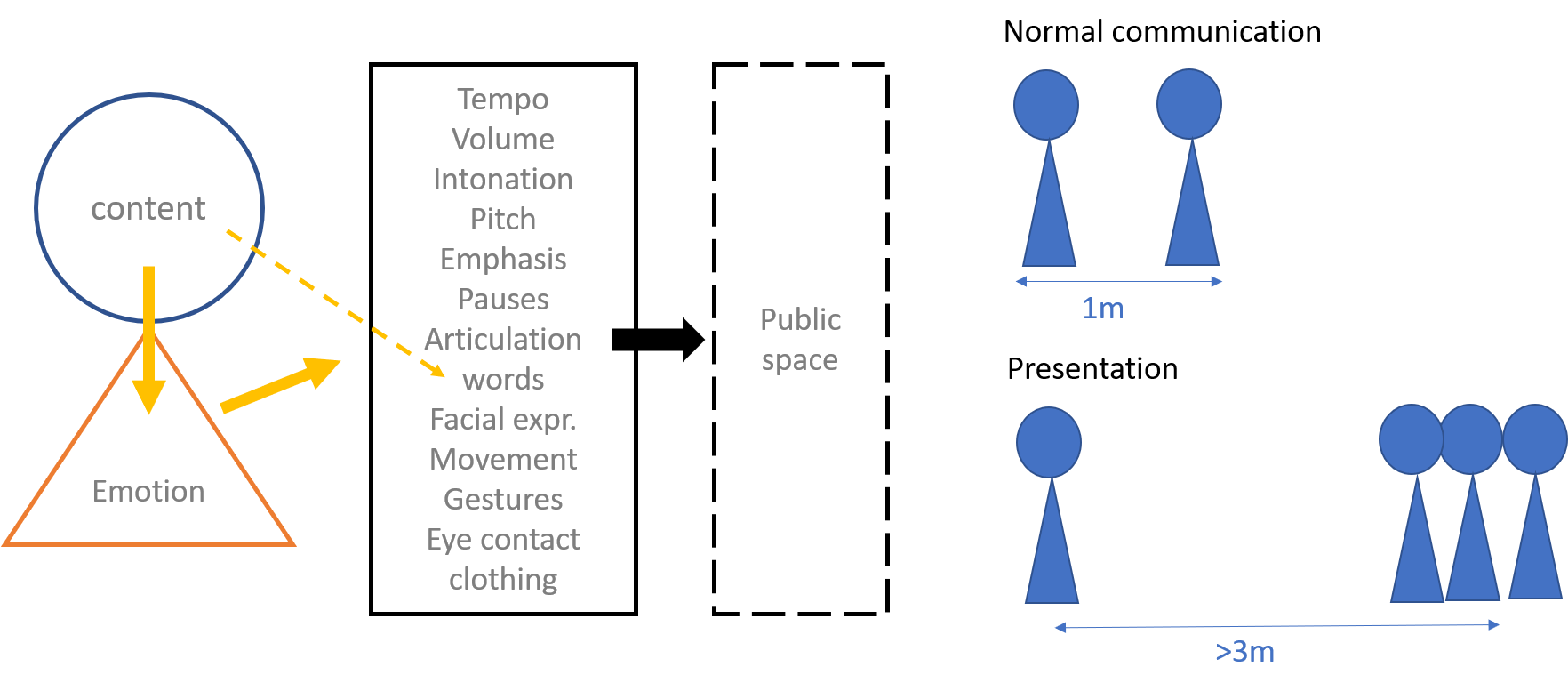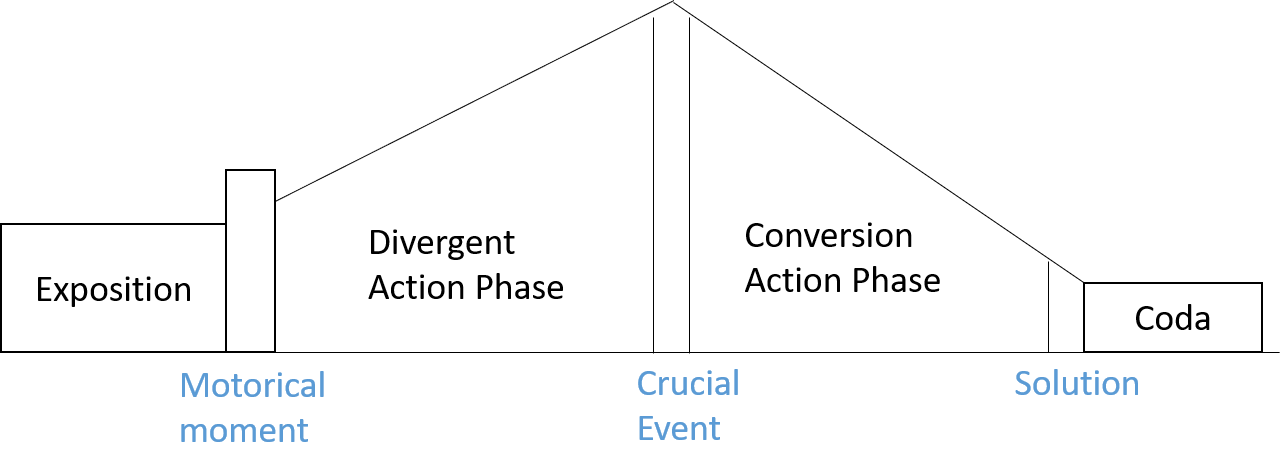If you have stayed in the technical industry for many years, you might hear this quote sometimes “We are always good at being a technical expert but we somehow need to sell our ideas to customers”. The technical industry is a business-based environment where any person who wants to realize its own marvelous idea needs to get approved by the market. How do we prepare ourselves to be ready for this demand? Do we have enough personal skills to convince our customers to accept the ideas?
Think about a situation where you were asked to give a presentation about your new technical findings tomorrow. You know that some major customers who come from different level sit under the stage waiting for your story. What the story are you going design such that they will follow your thought? How do you present your story such that customers will not get bored by your presentation? In this post I am going to show theatrical approaches which will help you communicate with your audience and construct the storyline.
Art of presenting science
Communication in theater settings
Everyone basically knew how to talk to people when they were young. You must have had the chance to describe any of you idea to your classmates in schools but it seems that that kind of experience is not useful when it comes to business presentation. What cause the difference between the daily conversion and the presentation? Let’s start from identifying the basic elements which are included in our normal conversation. When you want to say something to people around you, you first notice that you have some sort of ideas and emotions inside your brain, for instance, you want to urge your friend to speed up because you are likely to miss the bus. You will move your head back to your friends and say “Hurry up!” with impatience. The message in the brain just took the body movement and the intonation to come out. This actually means that content and emotions need channels to slide to the audience. If your fiend is really aware of time, he will react to you immediately. An interactive communication just started.

Let’s move the scenario back to the presentation. It seems like a familiar situation where you have to deliver message to the audience but now the distance between you and your audience is three times longer than normal. Furthermore, the audience may not be actively involved in your content. The first issue distance can be tackled by exaggerating the communication channels three times larger such that you are able to reach your audience. The second issue will partially be covered by exaggeration and could be completely addressed by the storyline. If we see these communications channels, almost all of them are strongly linked to emotion, which means your emotion can trigger the change of these channels. For example, if you are saying something which is really important, you could slow down the tempo, show a serious facial expression and lower the intonation, which can attract the audience attention that you are saying something significant. If you are listing how many achievement you made in this design, do not hesitate to use your gesture to count them and give the eye contact to the audience, this way you show your confidence to them. There are quite many channel sets I can make here for different scenarios but this will lead to a very long post. The rule of thumb of using theater settings is to observe how actors perform in theaters under such scenario, and try to project their way of communication to the presentation. I believe this way of presenting can make your presentation more attractive and powerful.
Constructing storyline
Why stories
I just briefly touched the point of the theatrical approach which is used to emphasize your emotion to reach the audience. Still we would like to keep our audience’s attention and make sure they can stay with our journey until the end. As human beings we know that we like stories because we could emerge ourselves to the story to feel what the adventure the characters are experiencing. we could attract our audience with a similar approach that is creating a well-structured story in the presentation. Let’s first explore what the basic elements a attractive story should have.
Stories are about people. Think about the time when we read a story, what is the first thing we are looking for? the character. characters will generate actions which make the story vivid. When we see the characters carry on these actions, what will trigger us to keep an eye on is the adventure. Only exciting stories can attract viewer’s eyes. But since we like to experience adventures in a safer environment, we also hope the character can manage danger in their journey. There will be a certain period that the characters need to wait until the they come up with a solution. The bold parts I just labeled are the basic element that should be included a good story. If I would summarized what a good story is in a single word, that is conflict:

Only when people want to do something but are unsure whether they could succeed could really triggers tension. Audience will be curious about the ending.
Story phases
To create a story with conflict, a useful story phasing is introduced in the picture below. The first phase is the exposition where you would describe your main characters and the background of this story. Without the exposition people cannot identify the character and will not worry about the conflict in the story. In other words, they cannot catch you. Another aspect in the exposition is to control the size of the story. If you have a short story, like only one improvement in your study, then make a small world such that people can focus on the conflict you encounter later. If you have a large story, for instance, several milestones have been achieved in your project, you should create a larger world to ensure those conflicts have the room to flourish. Exposition does not need to cover any conflict. It is a preparation state for the motorical moment.
Motorical moment is the event moment when you reveal the conflicts. The conflict should give people anxiety, which make people want to see how it continues. The conflict should not be too simple to be negligible but also not too huge to kill the audience’s expectation.
After revealing the conflict in the motorical moment, you start to take actions in the Divergent action phase. As previously described in the motorical moment, your audience has already expected that the conflict is challenging. Therefore, you will not immediately discover the solution in this phase. You will first take some actions which lead you away from the solution, or these actions may even guide you to the wrong direction, which cause the excitement and tension in the audience sensation. These divergent actions for scientific stories can be the realization of some initial ideas which did not work out in the end. The purpose of showing this experience until the crucial event coming is to confirm the challenge you set in the story.
The crucial event is the moment when something happens which makes the solution of conflict possible. After this event your actions will be redirected to the right direction which goes to the solution. Remember the crucial event is very short and distinguishable. It can just be an insight or thought which dramatically changes the direction of the story.
Convergent action phase is following the crucial event, which covers the activities pointing towards the solution. In this phase you can arrange faster tempo which shows confidence to audience that we are on the way to the solution. In the end they see the Solution.
After you have solved the conflict in the solution phase, there is still one more phase called Coda where you can make sure there is nothing happened after the solution phase. The statement can be every one is happy with the result or stakeholder is satisfied with the finding. It is an indication for the audience to notice that this is the end of the story.

Summary
In this post I have already introduced what theatrical approaches are and how to use them to address your presentation. Of course, nothing will be more beneficial than a hands-on practicing. After you see this approach, you should try to do some pitfall trainings on your presentation. Writing a story line before practicing can give you more feeling about what you want to say in the presentation. If you are interested in to get some feedback, perhaps I can give some guidance on it.